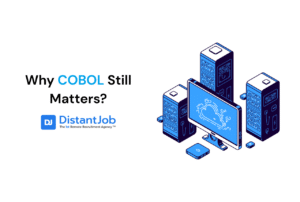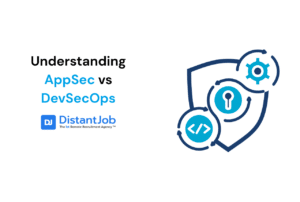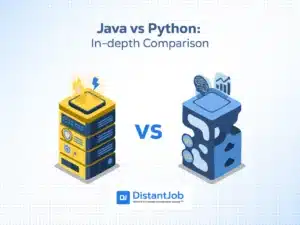As smartphone users, we rely heavily on our devices to keep track of important information. From contacts to payments, our iPhones are equipped with powerful databases that allow us to store and access our information easily. As developers, we understand how essential mobile databases are for creating a seamless user experience, but the challenge lies in finding the best iOS database to fit your needs.
A significant new development entered the iOS (lovely pun) of iOS developers in 2023 is Apple’s launch of SwiftData. It changes the development landscape because not only are there now third-party storage libraries like Realm, as well as storage services like Firestore and Supabase, which will manage data for you, but there’s now a simple, natively created Apple solution. But, which are the best iOS databases? Let’s find out!
What Is a Database?
By definition, a database is a structured collection of data. More or less, everything you use has a database, from your contact list to your Zalando account. The difference between your contacts and Zalando is how these databases come into play.
When you look for someone on your phone, the database organizes your contacts to help you find the number you need. Working like an invisible hand, the database quickly finds and picks what you need to improve your experience as a user. When you use Zalando, the database not only organizes your choices and purchases but also collects any of your input.
The database is the reason why Zalando knows what you want better than you. It saves, filters, loads, searches the previous data, making the app more personal and effective. For most consumers, this process is a routine when deciding on a purchase or digital service.
Consider just one fact. Apple App Store has been around only since 2008 when it featured 500 apps. Today, Apple App Store has over 2 million iOS apps and records of 194 billion downloads – which is why underestimating iOS databases might not be a smart choice.
How to Choose a Database for Your iOS Application Development?
When it comes to iOS databases, there are different valid options you can consider. Before looking at the best ones, let’s mention three elements you should keep in mind when thinking about what you really want for your mobile app.
- Speed affects how quickly data is stored and manipulated. As soon as the database knows what your users like, more people can appreciate your app’s performance.
- The scale is closely related to speed. A scalable database needs to be effective and fast to improve the overall experience of the user.
- Size is the database’s capacity for holding data – which you expect to increase if your iOS app’s adoption rate grows in the market.
Of course, the characteristics you’ll need to consider are many and cannot really be reduced to three bullet points. But when scrolling down the options you have, these three can guide you in choosing the best one for your iOS app.
Top 5 Databases for iOS Apps
The best iOS database really depends on the chosen sync strategy, complexity of queries, and developer capabilities, not just raw performance. Whether you start with a solution like SwiftData or Realm, and upgrade to services like iCloud or Firebase when you need to scale, or include SQLite/GRDB for things like smaller app size, privacy features, etc., the iOS world of 2023 provides far more flexibility with fewer downsides. More importantly, it allows you to spend less time focusing on the infrastructure and more time on building a real product! So here are the top 5:
1. SQLite (GRDB/FMBD)
Technically defined as a relational database management system (RDBMS), SQLite is the most popular database engine in the world.
Unlike a flat-file or hierarchical system, this iOS database stores data in tables. Organically integrated into the app, SQLite runs a separate service or in the background, staying very lightweight.
Perfect for watchOS modules and privacy‑first apps that never touch the cloud.
Why SQLite?
- Easy implementation
- No installation is needed and zero-configuration
- Highly portable and compatible with iOs and any platform from Windows to macOS to Linux to Android.
- SQLite can bind several programming languages, including C++, C#, JavaScript, Objective-C, PHP, Ruby, Java, and Python.
- Tiny binary, zero network latency
- Quietly raised its maximum database size to about 281 TB—far more storage than any phone will need for years.
2. Realm
Formally MongoDB, Realm is an open-source object base management system. With this object-oriented database, developers can code relationships between objects. If SQLite uses SQL databases, Realm uses C++. New on the iOS app scene, Realm is a strong competitor specifically designed for Android and iOS, Xamarin, and React Native.
Realm’s zero‑copy live objects auto‑update SwiftUI, while Atlas Device Sync now supports field‑level permissions and granular conflict rules. Great for content‑rich, offline‑first apps scaling to MongoDB Atlas clusters.
Why Realm?
- It is faster, compared to SQLite and Core Data.
- With valuable scalability, Realm can handle a large number of users and data
- For a developer, it has clear documentation facilitating the development process
- It has support network actress Twitter, Github and StackOverflow
- Live objects, Atlas Sync, conflict resolution
3. Core Data
Sponsored by Apple, with Core Data you can save app data for offline use, cache temporary app data, and define data types and categories. To be precise, Data Core is a persistence framework, a type of middleware that stores data in a database – it has the capability to use SQLite as a database. WWDC24 demos showed Core Data stores syncing across iPhone, iPad, and Vision Pro with one checkbox. SwiftData’s declarative models (@Model) and @Query Wrappers integrate directly with SwiftUI lists for zero‑boilerplate persistence .
Why Core Data
- Uses Apple-specific languages like Swift and Objective-C.
- It is faster than SQLite in storing data
- The framework has built-in features that reduce the written code by 70%
- Data can be organized into binary, XML, or SQLite stores.
- Toggle‑on sync, background merges
4. Firebase Firestore
Firestore ships with an encrypted local cache enabled by default and re‑synchronizes as soon as connectivity returns . The May 2025 iOS SDK added schema‑downgrade safety to make migrations painless. Firebase excels at serverless real‑time collaboration backed by Google’s cloud.
Why Firebase Firestore
- Built‑in security, auth and analytics
- Real‑time, bidirectional sync out of the box
- Offline persistence is automatically enabled
- Global scalability managed by Google
5. Couchbase Lite 3.2
Couchbase Lite 3.2 shines for low‑latency, AI‑ready experiences that must keep working off‑grid. The full database engine runs on‑device, eliminating round‑trip latency and maintaining functional apps in airplane mode or poor‑signal areas.
Why Couchbase Lite:
- Ideal for field‑service and AI‑driven lookup apps.
- Embedded, offline‑first NoSQL store
- Delta Sync 3.0 for bandwidth savings
- Vector search at the edge
- SQL++ and peer‑to‑peer options
Which One Should You Choose?
These five options cover the most general data storage strategies available to the iOS developer. Each has benefits and downsides, depending on the application’s needs, and provides optimum performance, scalability, data sync, and programming power.
| Best Choice | Why | |
|---|---|---|
| Lightweight, fully offline apps | SQLite (with GRDB/FMBD) | Ships with iOS, tiny footprint, type‑safe wrappers like GRDB add Combine publishers and thread‑safe connections |
| Apple‑native sync, zero backend | Core Data / SwiftData + CloudKit | One‑checkbox iCloud sync; SwiftData’s @Model macros and compile‑time schema checks reduce boilerplate |
| Reactive store plus optional cloud | MongoDB Realm | Zero‑copy live objects update SwiftUI instantly; Atlas Device Sync now supports granular field permissions |
| Real‑time chat & collaboration | Firebase Firestore | Google‑managed horizontal scaling, real‑time listeners, and offline cache enabled by default on Apple platforms |
| Edge AI, full‑text & vector search | Couchbase Lite 3.2 | On‑device JSON store, new vector indexes for semantic queries, and Delta Sync 3.0 that replicates only changed fields |
The best iOS database is the one that works for you, always keeping in mind speed, size, and scalability, and trying to match the strength of the data storage solution to the team’s skill set and the requirements of the project. What you need now is someone with the same vision to grow your company. At the end of the day, behind any excellent iOS database, there is a great professional, not only a mobile developer. Think carefully about what you need and which database you want.
If you don’t care much about speed and scalability, going with a familiar database like SQLite might work. If you prefer more in-built features, then Core Data is the one, while Realm is your best option when talking about speed. For xhat or collaborative editing, Firestore is best and for semantic search at the edge, you should go with Couchbase Lite 3.2.
When you’re ready to begin the development process and need to hire an experienced iOS developer to help you each step of the way, rely on DistantJob. We have the right person for you!
FAQ on Best IOS Database
The fastest iOS database is Realm, an open-source object database. It is known for its speed and scalability, as well as its ability to work both online and offline. It is also easy to use and integrates with Apple’s Xcode development environment.
1. Realm 2. SQLite 3. Core Data 4. Firebase 5. Couchbase Lite 6. MongoDB Mobile 7. AWS AppSync 8. Azure Mobile Apps 9. Postgres 10. Redis
iOS databases are generally quite secure, as they are encrypted and access is restricted to only approved apps. Apple also provides additional security features like two-factor authentication and Touch ID.





